Scaling Through Mergers & Acquisitions: Supply Chain Optimization Best Practices
AIMMS
FEBRUARY 18, 2025
Mergers and acquisitions (M&A) are powerful strategic tools for growth, but their success hinges on the seamless integration of supply chains.

AIMMS
FEBRUARY 18, 2025
Mergers and acquisitions (M&A) are powerful strategic tools for growth, but their success hinges on the seamless integration of supply chains.

IT Supply Chain
FEBRUARY 19, 2025
By Peter West (pictured) Content Writer The post How to Improve Ergonomics in Manufacturing and Warehousing appeared first on IT Supply Chain.
This site is protected by reCAPTCHA and the Google Privacy Policy and Terms of Service apply.

MercuryGate
FEBRUARY 20, 2025
Your tracking systems can pinpoint a package down to the exact shelf in a warehouse halfway across the planet. But when it comes to tracing your supply chain emissions? Thats about as clear as fog. The post Reduce Supply Chain Emissions: A Practical Guide for Logistics Professionals appeared first on MercuryGate International.
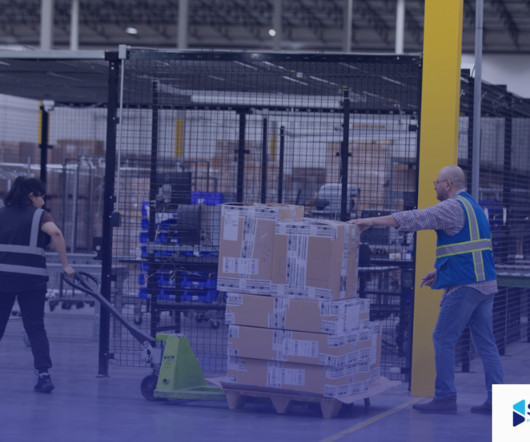
Amware Logistics and Fulfillment
FEBRUARY 20, 2025
Labor shortages are among the most pressing challenges in the logistics industry today. With eCommerce demand surging and supply chains under constant strain, the need for a skilled and reliable workforce has never been greater. However, high turnover rates, a shrinking labor pool, and increased competition for talent have made it difficult for logistics companies to keep up.
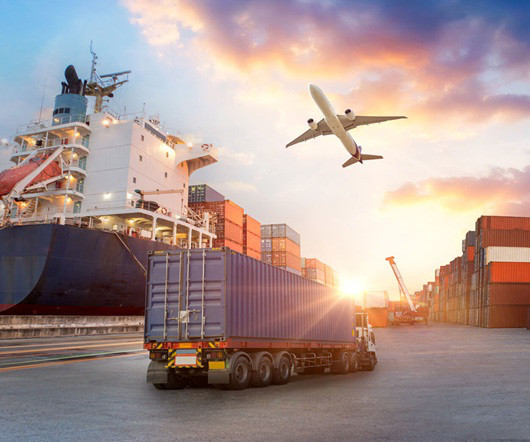
Advertisement
In today's rapidly evolving logistics industry, companies consistently strive for efficiency and competitiveness. However, the most significant factor driving business success isn't just technology or infrastructure—it's the people behind your processes. Employees aren't merely resources; they're your most strategic asset. High turnover rates and constant retraining costs severely impact logistics companies, draining productivity and profitability.

Logistics Viewpoints
FEBRUARY 17, 2025
Ted Krantz, CEO of Interos Interos , a company providing supply chain resilience and risk management software, emailed me to say that there was a supply chain risk everyone seemed to be ignoring – AI-related risks. Companies use risk management software , like the Interos solution, to monitor and analyze supplier risk events in real time. These are big data platforms that monitor news sources and assorted databases from governments, financial institutions, ESG NGOs, and other sources to de
Supply Chain Brief brings together the best content for supply chain and logistic professionals from the widest variety of industry thought leaders.

Jaggaer
FEBRUARY 20, 2025
What is Source to Pay (S2P)? Everything You Need to Know End-to-end process and end-to-end solution may be one of the most overworked phrases in business and IT. Yet in the case of source to pay, it is wholly justified. The term refers to the entire journeyfrom finding suppliers and negotiating contracts to finalizing agreements and making the final payment for goods.
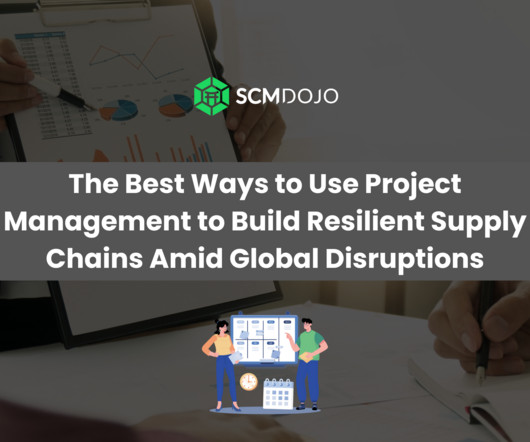
SCMDOJO
FEBRUARY 15, 2025
Supply chains are the backbone of global trade that ensure the smooth movement of goods and materials across industries. However, disruptions such as economic downturns, geopolitical tensions, natural disasters, and pandemics continue to expose vulnerabilities in their operations. Businesses must find effective ways to strengthen their networks and improve flexibility to maintain stability during uncertain times.

John Galt
FEBRUARY 19, 2025
Learn about AI-enabled demand sensing and how it makes demand planning nimbler and more responsive, elevating supply chain planning strategies.

Locus Robotics
FEBRUARY 18, 2025
Home February 18, 2025 5 Ways Automation Optimizes Warehouse Operations Bill Jozefowicz , Sr. Director of Continuous Improvement Warehouses today face two significant challenges: labor shortages and complex inventory management. As workforce demographics shift, companies struggle to recruit, retain, and develop skilled labor. The competition for workers is fiercer than ever, making it increasingly difficult to ensure warehouses are adequately staffed, especially during peak seasons when demand s

Advertisement
The $53 trillion manufacturing economy in the US is undergoing a major automation paradigm shift due to Artificial Intelligence (AI). Thanks to new practical frameworks, automation projects that were once impossible or inefficient to implement are now being fast-tracked, and robotics automation is becoming increasingly relevant to a growing number of users and scenarios.
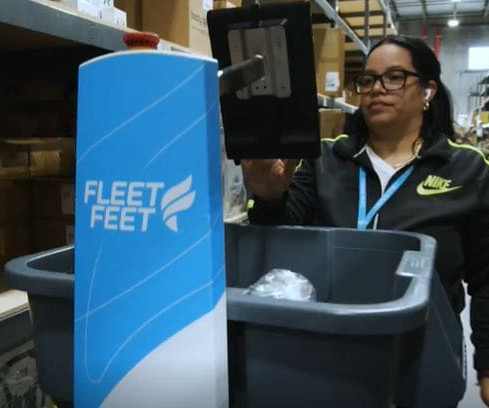
Logistics Viewpoints
FEBRUARY 17, 2025
Fleet Feet is the largest franchisor of retailer specialty stores focused on providing premium service for runners, walkers, and fitness enthusiasts of all abilities. To improve their operations, they installed autonomous mobile robots in their warehouse. According to a survey of 250 global companies by the consulting firm McKinsey, 91% of shippers and 75% of logistics service providers have implemented a warehouse management system.

Talking Logistics
FEBRUARY 18, 2025
What supply chain developments and trends will shape 2025? If we learned anything in 2020, its that predicting in January what will happen in the weeks and months ahead is a fools errand. All we can say for sure is that 2025 will be unpredictable, risky, and full of exceptions. That said, there have been. Read more The post Crisis, Chaos, and the Road Ahead: The New Era of Supply Chains appeared first on Talking Logistics with Adrian Gonzalez.

Procurement Academy
FEBRUARY 17, 2025
Theres a growing demand for certified professionals in the supply chain industryin fact, the employment of logisticians is projected to grow 19% from 2023 to 2033. This is a much faster rate than the average for all occupations. Supply chain certification equips companies and teams with the knowledge, tools, and techniques they need to design, manage, and optimize complex supply chains.
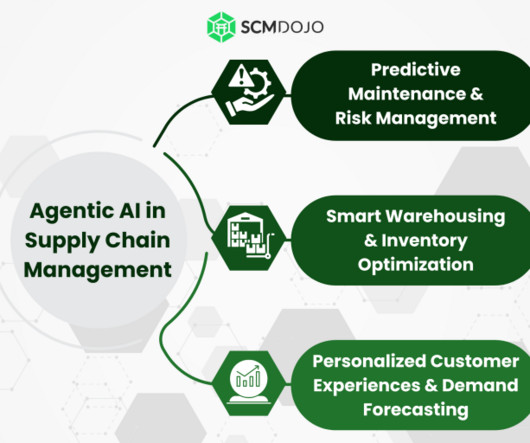
SCMDOJO
FEBRUARY 16, 2025
AI is evolving rapidly. From rule-based systems to predictive analytics and the generative AI boom, businesses have leveraged these technologies to optimize operations, forecast trends, and create data-driven strategies. However, the next wave of AI innovation is here: autonomous AI agents. Agentic AI refers to proactive, self-learning systems capable of making independent decisions, solving problems, and continuously adapting to changing conditions.
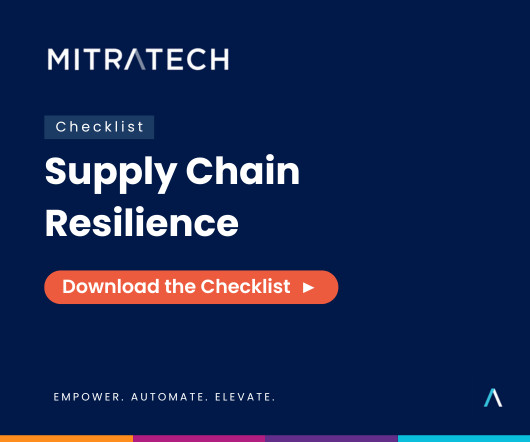
Advertisement
Strengthen your operations with the Supply Chain Resilience Checklist. This practical, easy-to-use tool helps your organization prepare for disruptions and ensure long-term continuity in an unpredictable world. Why Download: Identify and assess critical supply chain risks Ask the right questions to evaluate vendor preparedness Implement effective strategies to reduce vulnerabilities Improve communication, transparency, and coordination across your network What You’ll Learn: How to evaluate and m
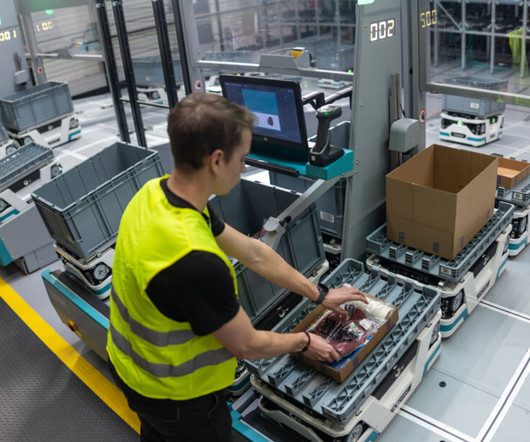
Logistics Viewpoints
FEBRUARY 20, 2025
The supply chain market, like many other industries, has been experiencing tremendous volatility and dynamic market forces. These pressures are progressively pushing companies to consider advanced automation in their supply chains and warehouses. Companies face constant pressure to secure a competent and reliable workforce at market wages that enables them to remain competitive with the global market, where wages and other operating costs are often lower.
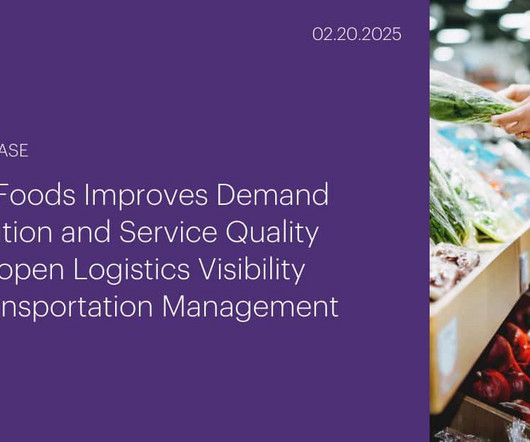
E2open
FEBRUARY 20, 2025
National distributor of food and fine ingredients, Batory, deploys modern real-time visibility solution to enable efficient product delivery, precise updates for customers DALLAS – Feb. 20, 2025 – E2open Parent Holdings, Inc. (NYSE: ETWO), the connected supply chain SaaS platform with the largest multi-enterprise network, announces the rollout of Logistics Visibility at Batory Foods , a milestone made possible by its transformation from periodic tracking to modern real-time transportation visibi

BlueYonder
FEBRUARY 20, 2025
A team from Blue Yonder attended the Manifest 2025 conference in Las Vegas last week, joining more than 7,200 attendees from the field of logistics. Presented by Blue Yonder customer DHL, Manifest brings together Fortune 500 global supply chain executives, logistics service providers (LSPs), innovators and investors. More than 400 speakers, including Blue Yonder customersand partners, discussed leading-edge innovations and technologies that are transforming the end-to-end supply chain.

SCMDOJO
FEBRUARY 20, 2025
Conveyor belts are a crucial element of logistics, enabling faster processing and sorting for all types of packages. When you are developing or renovating your warehouse, these unsung heroes deserve additional attention, as they can significantly impact your supply chain management. In this article, well review the most important elements of choosing the correct conveyor belt system for your warehouse so that you can maximize both profit and safety.
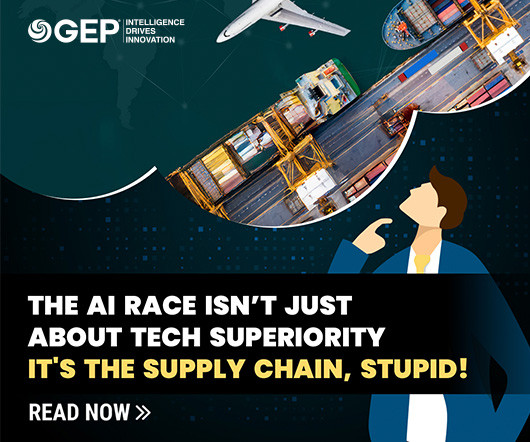
Advertiser: GEP
The race to dominate AI is no longer about who has the smartest algorithms — it's about who can build and scale faster. Behind every AI breakthrough lies a battle for resources: data centers, compute hardware, power, and telecom infrastructure. And right now, even tech giants are hitting a wall. Our latest white paper reveals the six critical supply chain elements that are increasingly separating AI leaders from the rest.

Logistics Viewpoints
FEBRUARY 18, 2025
Enterprise IT is on the cusp of a transformation the likes of which we havent seen since the transition to Software-as-a-Service (SaaS). In fact, Id argue this transition to what is increasingly being dubbed Service-as-Software has more profound implications for industries and workforces than anything thats come before. Service-as-Software is ushering in the era of the digital workforce in the supply chain industry in particular, its already begun.

SYSPRO Smarter ERP
FEBRUARY 21, 2025
The pandemic was a wake-up call for many industries, exposing vulnerabilities in global supply chains and highlighting the need for greater supply chain resilience and adaptability. As we navigate the post-pandemic landscape, manufacturers and distributors must apply the lessons learned to prepare for future disruptions, including potential tariff increases.
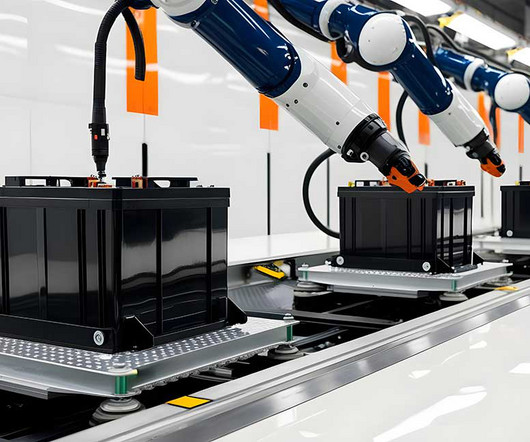
Arena Solutions
FEBRUARY 20, 2025
The demand for batteries is unquenchable. The industry is projected to reach USD $322.2 billion by 2030. 1 To meet the demand for more power, as well as the challenges manufacturers and businesses face, seems unsurmountableconsidering supply chain issues, regulatory changes, more sustainable materials, navigating the geopolitical spectrum, scaling to meet demand, competition, business innovation, plus the 2022 proposal by the European Commission (EC) to make digital product passports (DPP) manda
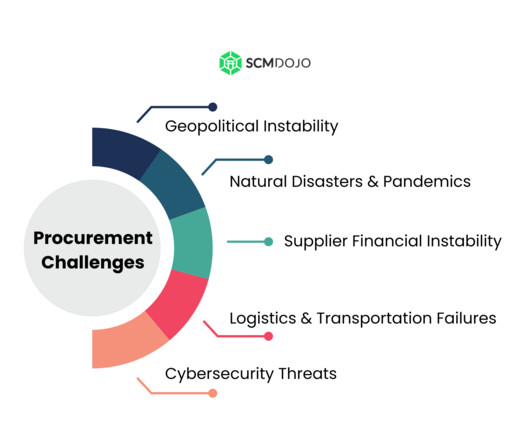
SCMDOJO
FEBRUARY 21, 2025
Why Your Procurement Strategy is More Critical Now Than Ever Before In an era of global supply chain disruptions, a robust procurement strategy is no longer optionalits essential. Businesses worldwide are grappling with unexpected challenges, from geopolitical conflicts and trade restrictions to natural disasters and economic downturns. Procurement leaders, Chief Procurement Officers (CPOs), and Supply Chain Managers must proactively build resilience into their procurement processes to safeguard

Speaker: Ethan Woolley, Director at Kharon
This webinar will explore how companies can proactively address compliance risks–rather than reactively responding to–UFLPA enforcement actions. Ethan Woolley will provide insights into the latest CBP enforcement trends, entity list updates, and industries under increased scrutiny, with a look at potential shifts under the Trump administration. Ethan will also explore how predictive data and strategic due diligence can help organizations stay ahead of regulatory challenges and strengthen complia

ThroughPut
FEBRUARY 18, 2025
In todays fast paced industrial world, inventory mismanagement poses substantial financial risks. With approximately $30 trillion of trade flowing from node to node, inventory rebalancing or mismanagement contributes to two major and often preventable issues: lost uptime, and lost sales. The Hidden Cost of Lost Uptime According to a Siemens report , in 2022 alone, unplanned downtime cost Fortune Global 500 companies $1.5 trillion.

Exiger Perspectives
FEBRUARY 21, 2025
Table of Contents Introduction The Corporate Sustainability Reporting Directive (CSRD) is an EU regulation designed to enhance corporate transparency regarding mandatory sustainability reporting throughout the EU. To prepare for its implementation and avoid substantial fines, companies operating in or with the EU must fully grasp the implications and requirements of the CSRD.
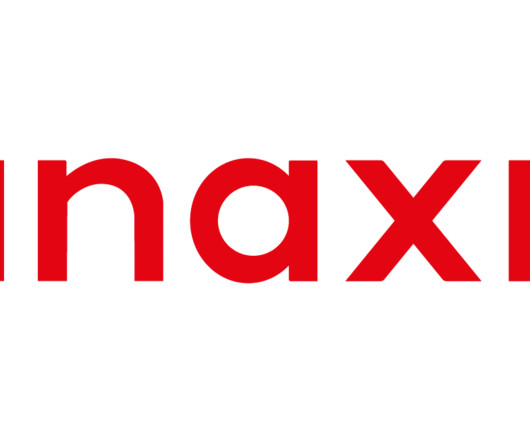
Supply Chain Matters
FEBRUARY 17, 2025
Last week enterprise ERP and SCM software and technology platform provider SAP SE made what the provider declared as a significant and groundbreaking announcement. In this initial Supply Chain Matters market education focused commentary we provide highlights, meaning, implications, reader takeaways and the broader perspectives of this announcement. Our initial take is that the announcement is yet another effort by a large tech provider to secure first mover advantage.

Axway
FEBRUARY 21, 2025
In today’s fast-paced automotive industry, seamless data exchange is critical for efficient manufacturing, supply chain management, and innovation.

Speaker: Benjamin Woll, Tiffany Spizzo, and Jaime Santos Alcón
Enterprise commerce is at an inflection point. Rigid, monolithic platforms slow brands down, but a full replatforming is disruptive and costly. Modular architecture offers a flexible, scalable alternative - allowing enterprise brands to modernize without ripping and replacing their entire stack. Learn how a composable approach helps modernize commerce stacks while maintaining control over critical systems.

Kodiak Hub
FEBRUARY 21, 2025
Managing a diverse supplier base effectively is crucial for businesses looking to optimize procurement strategies and strengthen supply chain resilience. Not all suppliers contribute equally to business operations, making it essential to categorize them based on key attributes such as risk, performance, and strategic value. Without a structured approach, companies may struggle with inefficiencies, increased risks, and missed opportunities for collaboration.

Exiger Perspectives
FEBRUARY 21, 2025
Table of Contents Introduction The European Cyber Resilience Act (CRA) is set to transform cybersecurity standards, imposing strict requirements on digital products sold across the EU. Approved by the European Parliament on March 12, 2024, the CRA sets mandatory standards for manufacturers, distributors, and importers of products with digital elements (PDEs), ensuring they are resilient to cyber threats throughout their lifecycle.
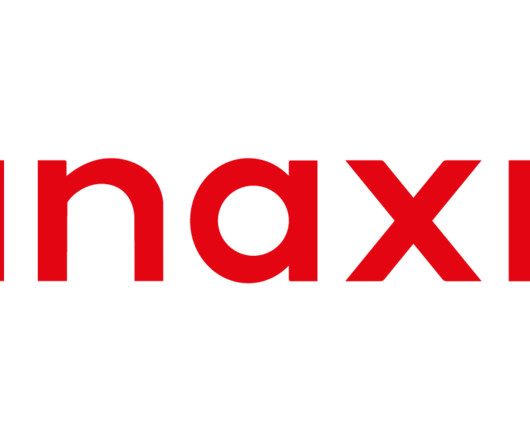
Supply Chain Matters
FEBRUARY 17, 2025
Amid a continuing component supply shortfall involving commercial aircraft global supply networks a report indicates that India has become a more attractive source of components. Introduction Our research arms recently published research advisory, 2025 Predictions for Industry Specific Demand and Supply Networks ( Available for complimentary downloading in our research center) , outlines specific industry demand and supply network challenges relative to commercial aircraft supply networks during
Let's personalize your content